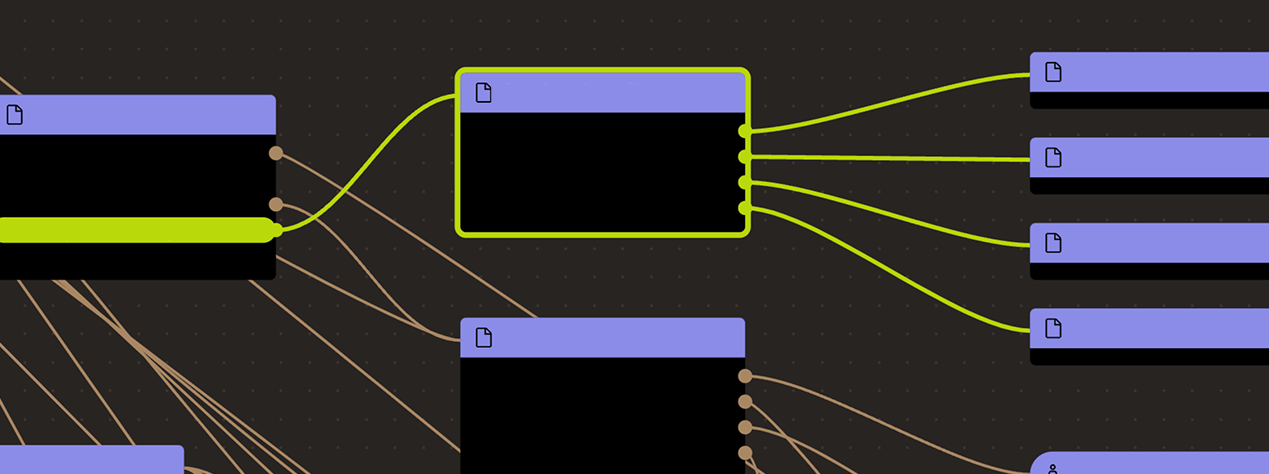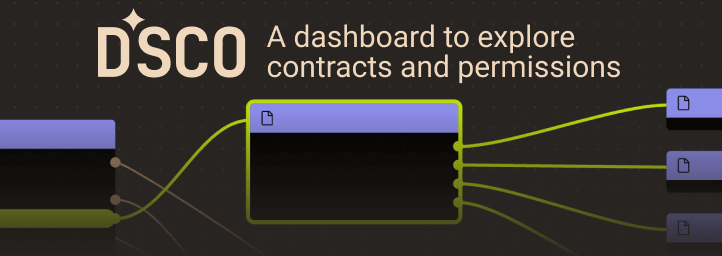Search
Search for projects by name
 Forknet
Forknet
Badges
About
An onchain order book DEX for spot and perpetuals, built on CDK OP Stack and natively integrated with Agglayer for unified liquidity.
About
An onchain order book DEX for spot and perpetuals, built on CDK OP Stack and natively integrated with Agglayer for unified liquidity.
Why is the project listed in others?
Consequence: projects without a proper proof system fully rely on single entities to safely update the state. A malicious proposer can finalize an invalid state, which can cause loss of funds.
Learn more about the recategorisation here.
2025 Sep 03 — Nov 03
Funds can be stolen if
There is no mechanism to have transactions be included if the sequencer is down or censoring.
Currently the system permits invalid state roots. ‘Pessimistic’ proofs only validate the bridge accounting.
All of the data needed for proof construction is published on Ethereum L1.
There is no window for users to exit in case of an unwanted regular upgrade since contracts are instantly upgradable.
Only the whitelisted proposers can publish state roots on L1, so in the event of failure the withdrawals are frozen.
Shared bridge and Pessimistic Proofs
Polygon Agglayer uses a shared bridge escrow for Rollups, Validiums and external chains that opt in to participate in interoperability. Each participating chain needs to provide zk proofs to access any assets in the shared bridge. In addition to the full execution proofs that are used for the state validation of Rollups and Validiums, accounting proofs over the bridges state (Polygon calls them ‘Pessimistic Proofs’) are used by external chains (‘cdk-sovereign’ and aggchains). Using the SP1 zkVM by Succinct, projects without a full proof system on Ethereum or custom proof systems are able to share the bridge with the zkEVM Agglayer projects.
Funds can be lost if the accounting proof system for the bridge (pessimistic proofs, SP1) is implemented incorrectly.
Funds can be stolen if the operator manipulates the L2 state, which is not validated on Ethereum (CRITICAL).

Ethereum
Roles:
Allowed to pause withdrawals. In op stack systems with a proof system, the Guardian can also blacklist dispute games and set the respected game type (permissioned / permissionless).
Allowed to commit transactions from the current layer to the host chain.
Permissioned to post new state roots and global exit roots accompanied by ZK proofs.
Actors:
A Multisig with 5/12 threshold.
- Can upgrade with 3d delay
- AgglayerGateway Timelock with 3d delay (no delay if in emergency state) → SharedProxyAdmin
- AgglayerBridge Timelock with 3d delay (no delay if in emergency state) → SharedProxyAdmin
- AgglayerManager Timelock with 3d delay (no delay if in emergency state) → SharedProxyAdmin
- AgglayerGER Timelock with 3d delay (no delay if in emergency state) → SharedProxyAdmin
- Can interact with AgglayerGateway
- add new routes from proof selector to verifier / pessimisticVkey for pessimistic proofs with 3d delay Timelock with 3d delay (no delay if in emergency state)
- add or update default aggchain verification keys (aggchainVkey) for any given selectors
- change the aggchainSigners and threshold (a multisig used for permissioned state transitions)
- freeze routes from proof selector to verifier / pessimisticVkey for pessimistic proofs
- Can interact with AgglayerBridge
- upgrade the implementation of wrapped tokens deployed by the bridge with 3d delay Timelock with 3d delay (no delay if in emergency state)
- Can interact with AgglayerManager
- deploy new projects that use predefined rollup types (implementations) and connect them or other Agglayer chains to the PolygonRollupManager
- manage all access control roles, add new rollup types (which are implementation contracts that can then be upgraded to by connected projects), update any connected projects to new rollup types, migrate to pessimistic proofs and rollback batches, connect existing rollups to the PolygonRollupManager with 3d delay Timelock with 3d delay (no delay if in emergency state)
- manage parameters like fees for all connected projects, set the trusted aggregator, stop the emergency state, update projects and obsolete rollup types
- Can interact with Timelock
- propose, cancel and execute transactions in the timelock, manage all access control roles and change the minimum delay with 6d delay or with 3d delay Timelock with 3d delay (no delay if in emergency state) with 3d delay (no delay if in emergency state) - or - acting directly with 3d delay (no delay if in emergency state)
Participants (12):
0xcAB3…62f90xAb35…235E0x54c4…65d90x2161…d4170xED7c…B5a20xdFEd…56Da0xffbf…32380xeD44…dB370x516e…46B70x4c16…88910xA0B0…f2270xEad7…9dB2A Multisig with 4/10 threshold.
- Can upgrade with no delay
- AnchorStateRegistry ProxyAdmin
- SuperchainConfig ProxyAdmin
- OptimismMintableERC20Factory ProxyAdmin
- SystemConfig ProxyAdmin
- L1StandardBridge ProxyAdmin
- DisputeGameFactory ProxyAdmin
- L1CrossDomainMessenger ProxyAdmin
- L1ERC721Bridge ProxyAdmin
- OptimismPortal2 ProxyAdmin
- DelayedWETH ProxyAdmin
- Can interact with AddressManager
- set and change address mappings ProxyAdmin
- Can interact with SystemConfig
- Can interact with DelayedWETH
- can pull funds from the contract in case of emergency
- A Guardian - acting directly
Participants (10):
0xFe0a…e2d40x8117…E7Ac0xA073…bda20xF331…647D0xF0B7…A4f0EOA 20x3840…Fd5f0xa0C6…90380xefCf…dD5C0x4D80…5BAeA Multisig with 6/8 threshold.
- Can interact with AgglayerManager
- activate the emergency state in the PolygonRollupManager and in the shared bridge immediately, effectively pausing all projects connected to them and making system contracts instantly upgradable
Participants (8):
0xFe45…2e4b0xaF46…261D0xBDc2…FEFf0x4c16…88910x3ab9…D6220x49c1…0E860x9F7d…86A00x2188…1C28A Multisig with 3/8 threshold.
- Can interact with AgglayerManager
- deploy new projects that use predefined rollup types (implementations) and connect them or other Agglayer chains to the PolygonRollupManager
Participants (8):
0xAb35…235E0x3038…D3b50xa439…AE310xD947…fCFC0xCE27…AaAc0x0B84…Ca770x0185…22A60x7316…4496- A Sequencer - acting directly
Member of Conduit Multisig 1.
- Can interact with AggchainECDSAMultisig
- set the trusted sequencer address
- Can interact with AggchainECDSAMultisig
- sign state transitions (replaces state validation for this aggchain)
- A trusted Aggregator - acting directly

Ethereum
The dispute game factory allows the creation of dispute games, used to propose state roots and eventually challenge them.
- Roles:
- admin: ProxyAdmin; ultimately Conduit Multisig 1
The OptimismPortal contract usually is the main entry point to deposit funds from L1 to L2 or for finalizing withdrawals. It specifies which game type can be used for withdrawals, which currently is the PermissionedDisputeGame. This specific fork of the standard contract disables the depositTransaction() function, which prevents users from sending or forcing any transactions from L1 to L2, including token deposits. It is instead used for configuration and administration of the system.
- Roles:
- admin: ProxyAdmin; ultimately Conduit Multisig 1
A verifier gateway for pessimistic proofs. Manages a map of chains and their verifier keys and is used to route proofs based on the first 4 bytes of proofBytes data in a proof submission. The SP1 verifier is used for all proofs.
- Roles:
- addPpRoute: Timelock; ultimately PolygonAdminMultisig
- admin: SharedProxyAdmin; ultimately PolygonAdminMultisig
- aggchainDefaultVKey: PolygonAdminMultisig
- alMultisig: PolygonAdminMultisig
- freezePpRoute: PolygonAdminMultisig
The shared bridge contract, escrowing user funds sent to Agglayer chains. It is usually mirrored on each chain and can be used to transfer both ERC20 assets and arbitrary messages.
- Roles:
- admin: SharedProxyAdmin; ultimately PolygonAdminMultisig
- proxiedTokensManager: Timelock; ultimately PolygonAdminMultisig
- This contract can store any token.
The central shared managing contract for Polygon Agglayer chains. This contract coordinates chain deployments and proof validation. All connected Layer 2s can be globally paused by activating the ‘Emergency State’. This can be done by the PolygonSecurityCouncil or by anyone after 1 week of inactive verifiers.
- Roles:
- admin: SharedProxyAdmin; ultimately PolygonAdminMultisig
- createRollup: PolygonAdminMultisig, PolygonCreateRollupMultisig
- defaultAdmin: Timelock; ultimately PolygonAdminMultisig
- emergencyCouncilAdmin: PolygonSecurityCouncil
- trustedAggregator: EOA 4, EOA 5
- tweakParameters: PolygonAdminMultisig
A merkle tree storage contract aggregating state roots of each participating Layer 2, thus creating a single global merkle root representing the global state of the Agglayer, the ‘global exit root’. The global exit root is synchronized to all connected Layer 2s to help with their interoperability.
- Roles:
- admin: SharedProxyAdmin; ultimately PolygonAdminMultisig
A timelock with access control. In the case of an activated emergency state in the AgglayerManager, all transactions through this timelock are immediately executable. The current minimum delay is 3d.
- Roles:
- timelockAdmin: PolygonAdminMultisig (no delay if in emergency state), Timelock (no delay if in emergency state); ultimately PolygonAdminMultisig (no delay if in emergency state)
The main entry point to deposit ERC20 tokens from host chain to this chain.
- Roles:
- admin: ProxyAdmin; ultimately Conduit Multisig 1
Sends messages from host chain to this chain, and relays messages back onto host chain. In the event that a message sent from host chain to this chain is rejected for exceeding this chain’s epoch gas limit, it can be resubmitted via this contract’s replay function.
- Roles:
- admin: ProxyAdmin; ultimately Conduit Multisig 1
Used to bridge ERC-721 tokens from host chain to this chain.
- Roles:
- admin: ProxyAdmin; ultimately Conduit Multisig 1
Contains the latest confirmed state root that can be used as a starting point in a dispute game.
- Roles:
- admin: ProxyAdmin; ultimately Conduit Multisig 1
The PreimageOracle contract is used to load the required data from L1 for a dispute game.
A helper contract that generates OptimismMintableERC20 contracts on the network it’s deployed to. OptimismMintableERC20 is a standard extension of the base ERC20 token contract designed to allow the L1StandardBridge contracts to mint and burn tokens. This makes it possible to use an OptimismMintableERC20 as this chain’s representation of a token on the host chain, or vice-versa.
- Roles:
- admin: ProxyAdmin; ultimately Conduit Multisig 1
Same as FaultDisputeGame, but only two permissioned addresses are designated as proposer and challenger. In the context of this permissioned aggkit deployment, there are no state proposals made here and the op stack fault proof system is not used.
Contract designed to hold the bonded ETH for each game. It is designed as a wrapper around WETH to allow an owner to function as a backstop if a game would incorrectly distribute funds.
- Roles:
- admin: ProxyAdmin; ultimately Conduit Multisig 1
- owner: Conduit Multisig 1
- Roles:
- owner: Conduit Multisig 1
The MIPS contract is used to execute the final step of the dispute game which objectively determines the winner of the dispute.
Extension contract of the AgglayerBridge for asset metadata…
Value Secured is calculated based on these smart contracts and tokens:
The current deployment carries some associated risks:
Funds can be stolen if a contract receives a malicious code upgrade. There is no delay on code upgrades (CRITICAL).
